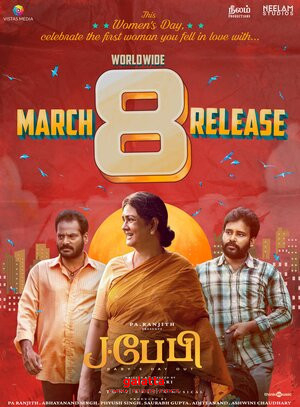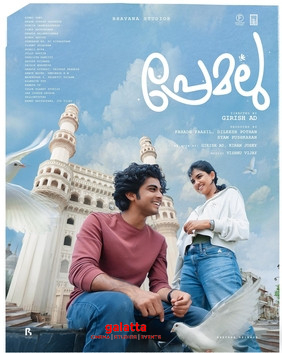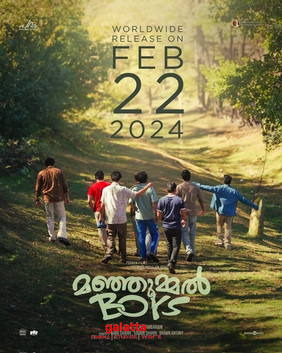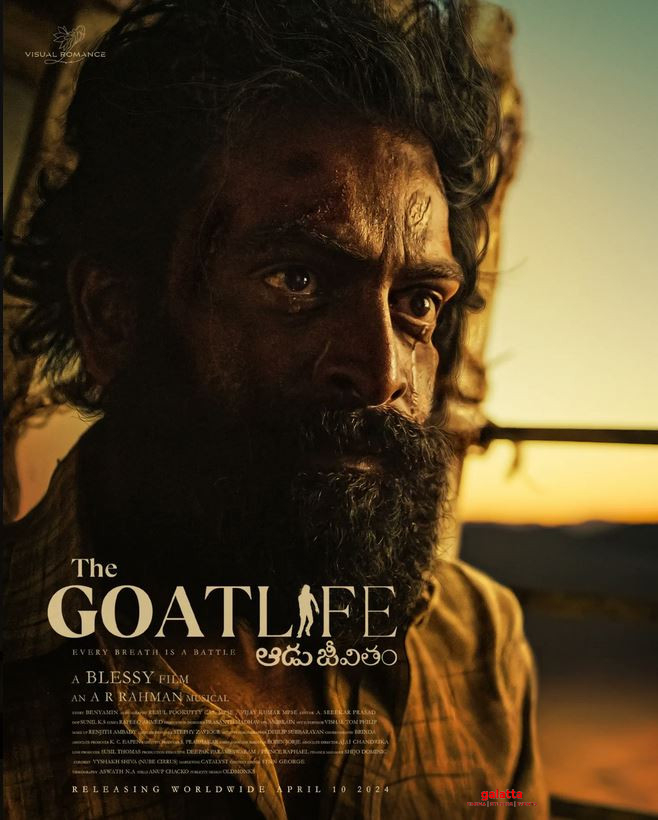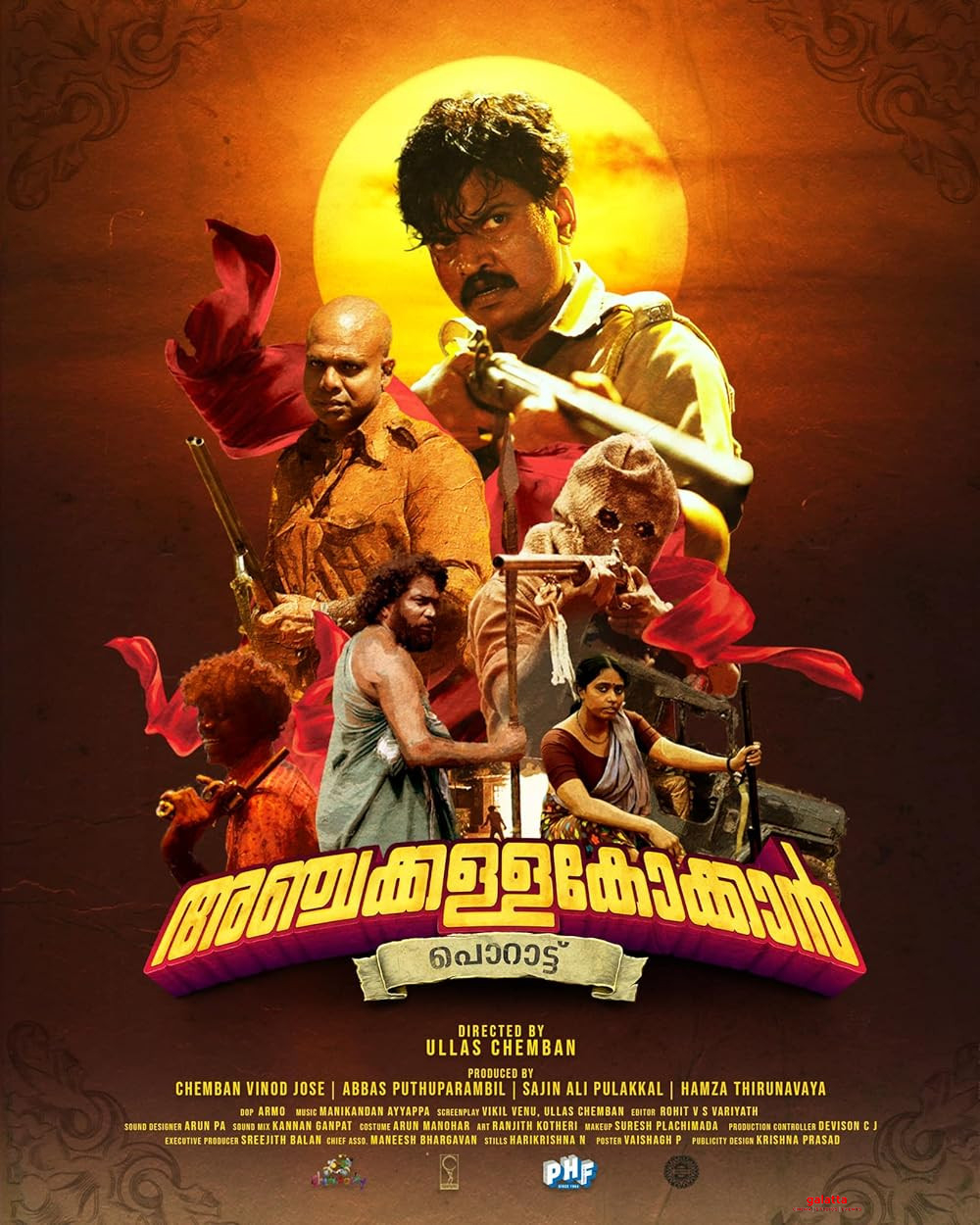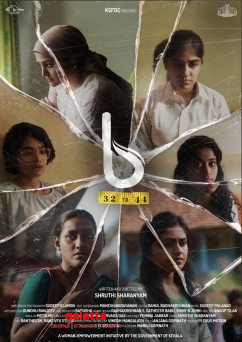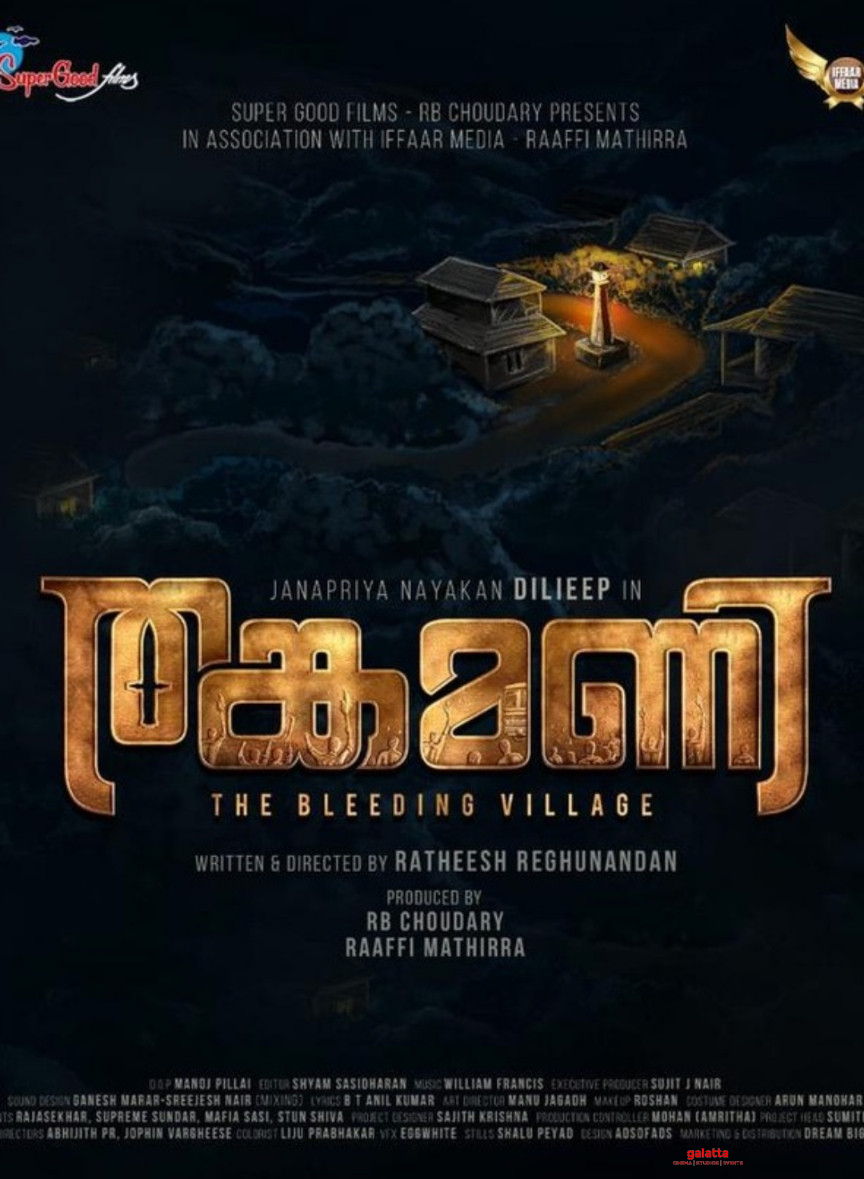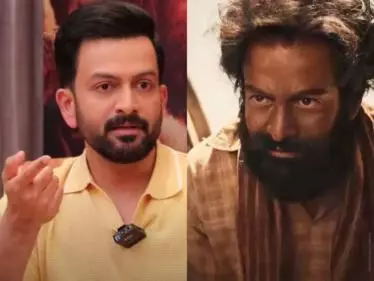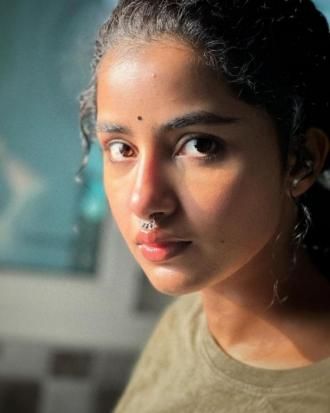Aadujeevitham Movie Cast & Crew
Seen one way, Aadujeevitham is already the stuff of cinema legend. Benyamin’s book showcased the horrifying story of a Malayali – named Najeeb – who went to Saudi Arabia for one kind of job, and was duped into becoming a goatherd – a slave – in the middle of the desert. It’s not just one man’s ordeal, it’s also an intimate chronicle of the dark side of the Gulf dream. And then came Blessy and his many, many years of trying to get this project off the ground. And then there was the shooting, over five years, off and on. And then there was the COVID lockdown, with the team stuck in Jordan, unable to return. Heck, Benyamin could write a sequel: a bestselling book about how his bestselling book was made into a movie. Any time anyone makes a listicle on long-gestating, troubled productions, Aadujeevitham will undoubtedly be somewhere near the top.
As a movie, it has its moments. An early visual has an inconspicuous grain of sand blown this way and that way by the wind, until it is sucked up into a tornado: I saw this as a visual metaphor for Najeeb, an inconspicuous man sucked up by forces beyond his control and helpless to do anything about it. Soon, we see him as a shepherd in the desert, lowering his mouth into a tank to drink water, like one of the animals he tends to. Sunil KS is the cinematographer, and some of the images are undoubtedly beautiful – like the visual of the night sky reflected in still water, or the sight of Najeeb screaming. In the latter, it’s daytime. He is surrounded by sand and sky. There is no background score – it’s just the animal sound of him and his plight.
But the remarkable thing about the cinematography is that the shots are so… natural. Whether it’s Lawrence of Arabia or The English Patient or Paheli or Reshma Aur Shera or the new Dune movies, the desert landscape has been seen with some amount of exoticism – it has been seen as “beautiful”. Sunil does give us some shots that seem “composed” – like the one where Najeeb meets and embraces a long-lost friend. The film is in 2D, but this image looks three-dimensional. Najeeb and his friend are on one of many dunes. The sky above pours sunlight through slits in the clouds. And in the far distance, deep down, we see an all-terrain vehicle. But otherwise, Sunil does not “prettify” the desert. Because what is “pretty” to Najeeb is really his home amidst the lush greenery and backwaters of Kerala, where his wife (Amala Paul, in a brief role) wears deep greens and gorgeous pinks. The saturation of the colours – as opposed to the unvarying browns of the desert – takes your breath away.
And the masterfully chosen locations in the desert give the feeling of not being home. The imposing circle of rock formations around the shepherding area suggest that Najeeb is walled in – as though he is in a prison created by nature. There’s an additional layer of alienation through unsubtitled Arabic, which Najeeb’s captor-masters speak and he is unable to understand. In a superb scene when Najeeb is still new to the land, he speaks in Malayalam, his captors speak in Arabic, and we hear the sound of goats and sheep and camels. It seems like they are speaking in yet another language Najeeb cannot understand. In this moment, Blessy really puts us into Najeeb’s head. We really understand what it must be like to be him.
But most other times, Blessy does some disservice to the book. To understand why, we must understand both this filmmaker and this book. Blessy is a pre “new-gen” mainstream filmmaker who has little use for subtlety. He is an unapologetic melodramatist who likes to play with our emotions on a big scale. The book, on the other hand, is as minimalistic as it comes. It is the story of a man and his loneliness, which leads to a series of musings. Some of these musings – for example – are about God, and Blessy removes all of these individual thoughts and replaces them (collectively) with AR Rahman’s soaring anthem, Periyone. I am the last person to say that a film should be faithful to the book it is based on. In fact, I believe the book should be destroyed and its essence (which is what matters) should be reimagined with a new cinematic grammar.
That never happens in Aadujeevitham. The logic seems to be this: “We have a book where a man talks a lot to himself, and then he escapes. Let’s chop off all the (internal) talking, and concentrate on just the externals: the external suffering, the external blisters on the feet, the remarkable external transformation of leading man Prithviraj Sukumaran, the long external journey of escape…” No one can dismiss the fact that hard work has gone into these externals, into the physical making of this entire movie. But this transforms Aadujeevitham from an existential drama to an ultra-dramatic survival story. Najeeb could have ended up kidnapped by a seal-trapping community in Iceland, and the film’s narrative graph would have not been any different. Apart from the fact that he loves his wife and mother, who is this man? How does he look at the creatures he tends to? How does he look at the desert? None of this is answered satisfactorily.
About the wife, the scenes with Prithviraj and Amala Paul simmer with both understated and bold sensuality. This is Blessy in his element. He knows domestic emotions very well, and the “cinematic” nature of these visuals adds a dreamlike dimension to them. (If you are in a desert and thinking about all this, there is likely to be some 70mm embellishment in the memory.) But these flashbacks cut into the story of loneliness. They become part of a series of “events” in the screenplay that keep distancing us from Najeeb’s plight. Something is always happening: with vultures, with snakes, with a sandstorm, with a letter blown this way and that way by a very cinematic wind. In Cast Away, we are stranded with the protagonist on that island, and whatever he experiences becomes a deep-rooted experience of the viewer. Here, when Najeeb bids a tearful goodbye to the animals he has been tending to, the scene comes out of nowhere, just to manipulate our emotions – because we have never been allowed to see the closeness he felt with these creatures.
I understand that attention-deficit audiences need to see constant activity and need constant emotional manipulation – but surely a few minutes in a nearly three-hour movie could have been devoted to some introspection. Rahman’s score is huge, and it inflates every emotion. When a simple train chugs into a small station in a small village, we hear a huge chorus – it’s that sort of background music. We hardly need to feel anything because the music is doing all the feeling and emoting for us. With the exception of the wife, no character is established well. They are all chalk outlines: good Arab, bad Arab, old shepherd, kind African, and so on. Sure, Aadujeevitham works as a generic watch, but with this source material, with this budget and with this director and star, the movie should have been so much more.
That’s why it’s impossible to overestimate what Prithviraj does here. He is a strong, tall, strapping, handsome presence in the movies – he’s someone to whom strength comes easier than vulnerability. But despite inconsistent makeup, his commitment to the character transforms his energies. The scene where he has a bath after ages – it’s Prithviraj like you have never seen him before. The scene where he hesitates before taking a can of milk to a tent – it’s another scene where he does very little, and yet the impact is so much. There are other places where the “acting” is visible, but that is also the way Blessy has envisioned this film and this character. There is no stillness. It’s the director’s prerogative to transform an internal drama into an overblown survival saga. But even on those terms, Aadujeevitham stays distant. We never connect to the character. He is as much a mirage as something you’d encounter in a desert: so close, yet so far.


